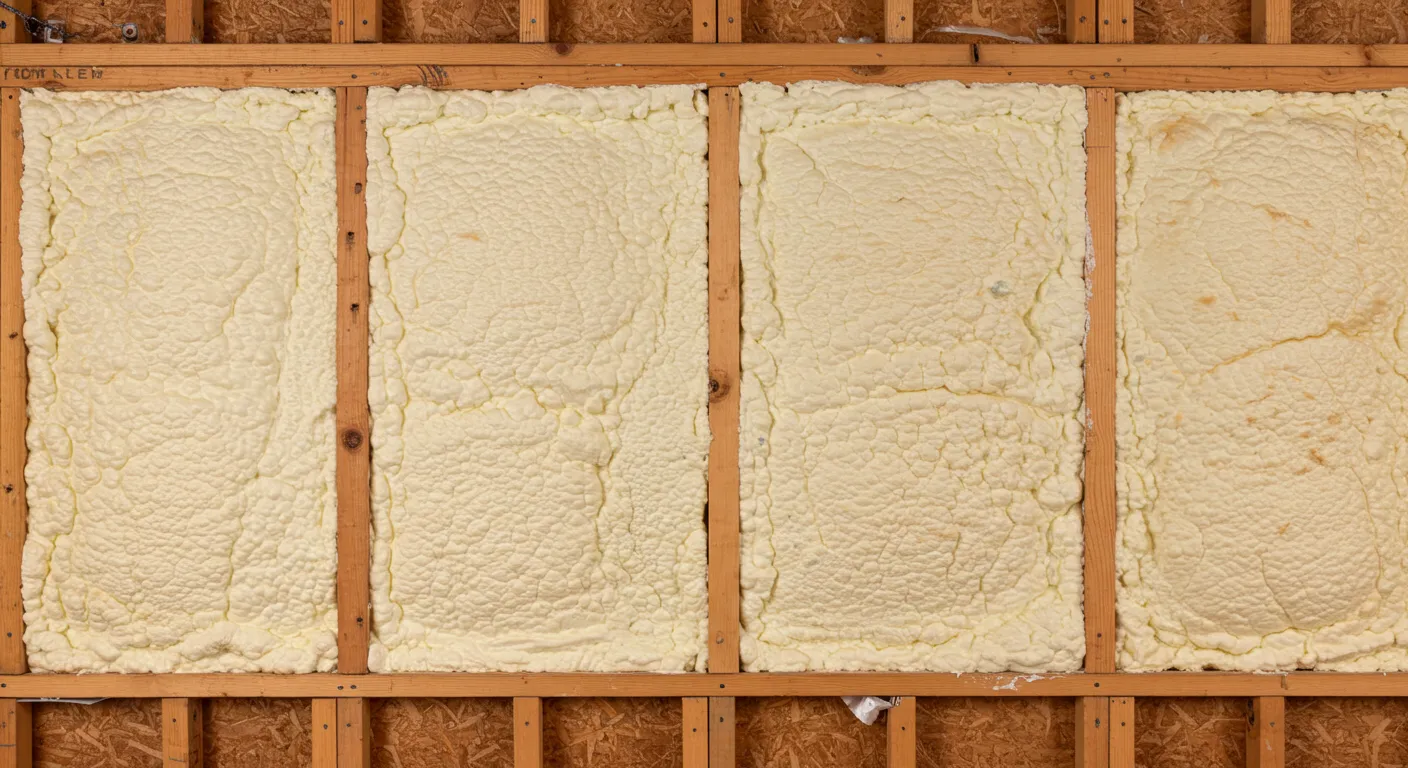Spray foam insulation improves indoor air quality by creating an air-tight barrier that reduces the infiltration of outdoor pollutants, allergens, and moisture. It seals gaps and cracks that otherwise allow airborne contaminants to enter the building envelope. This reduces exposure to dust, pollen, mold spores, and exhaust fumes all of which impact respiratory health and comfort.
Closed cell and open cell spray foam both offer advantages for indoor air quality. Closed cell provides superior air sealing and moisture control, while open cell supports sound dampening and flexibility in certain construction types. The insulation type used and the quality of the application process directly influence outcomes.
This article provides technical data, regional guidance, and expert-backed comparisons to help evaluate the role of spray foam insulation in creating a healthier indoor environment.
How Spray Foam Reduces Contaminant Infiltration
Air Sealing and Pollutant Control
Spray foam adheres to framing, sheathing, and penetrations, creating a continuous insulation and air barrier. This minimizes the entry points for external contaminants such as vehicle exhaust, pesticide drift, pollen, and industrial particulates.
Bonus Tip: In older homes, retrofitting with closed cell foam around rim joists and crawl spaces often produces the most measurable improvement in indoor air quality.
Moisture Management to Prevent Mold
Moisture buildup inside walls creates conditions for mold growth, which releases airborne spores. Closed cell spray foam offers a Class II vapor retarder that controls interior humidity and resists water absorption.
| Technical Comparison | Closed Cell Foam | Open Cell Foam |
|---|---|---|
| Air Seal Rating | High | Moderate |
| Water Vapor Permeability | Low (0.8 perms or less) | High (up to 16 perms) |
| Mold Resistance | High | Moderate |
| Structural Rigidity | Adds structural strength | No structural benefit |
| Sound Absorption | Moderate | High |
| Application Area Suitability | Roof decks, foundations, exteriors | Walls, ceilings, sound barriers |
Technical Specs and Material Characteristics
| Property | Closed Cell Foam | Open Cell Foam |
|---|---|---|
| R-Value (per inch) | R-6.0 to R-7.0 | R-3.5 to R-3.7 |
| Density | ~2.0 lbs/ft³ | ~0.5 lbs/ft³ |
| Water Absorption Rate | <2% | 20%-25% |
| VOC Off-Gassing (cured) | Negligible | Negligible |
| Thermal Drift | Minimal | Minimal |
| Fire Resistance Classification | Varies by formulation | Varies by formulation |
Bonus Tip: Always confirm whether the foam being installed is third-party certified for low-emission performance under GREENGUARD Gold or similar standards.

Region-Specific Application: Louisiana and Gulf Coast
In high humidity regions like Louisiana, managing moisture intrusion is critical. Polyco Spray Foam Insulation recommends closed cell foam for crawlspaces and exterior walls to prevent condensation and mold. Open cell is more suitable for interior sound control and attic insulation in vented assemblies.
2023 CDC guidance on building dampness links moisture ingress to higher rates of asthma and respiratory illness in southern climates (Source: CDC, 2023). Proper insulation and air sealing are among the top recommendations for mitigation.
Things to Consider Before Making a Decision
- Building Age and Structure Type: Older homes may need additional prep work due to existing air leaks and framing conditions.
- Climate Zone: Gulf Coast regions benefit more from closed cell foam’s vapor barrier properties.
- Application Area: Different foam types serve different purposes; attics, basements, and walls each require specific approaches.
- Installation Method: Improper installation can reduce performance and cause off-gassing. Always use trained, certified contractors.
Most Relevant Services from Polyco Spray Foam Insulation
- Spray Foam Insulation Contractor Complete installation services for residential and commercial buildings using both foam types.
- Closed Cell Foam Insulation High-density insulation ideal for moisture control, structural reinforcement, and tight air sealing.
- Open Cell Foam Insulation Flexible, sound-absorbing insulation for interior applications.
- Soil Stabilization Foam injection to support subsurface structure and reduce shifting or sinking that can compromise indoor environments.
Common Questions About Spray Foam and Air Quality
Can spray foam insulation trap pollutants inside the home?
No. Once cured, spray foam does not emit harmful VOCs and helps block outside pollutants.
How long after installation is it safe to occupy the space?
Typically 24 hours after installation with proper ventilation, depending on product specifications.
Will spray foam reduce indoor dust levels?
Yes. By sealing gaps and cracks, it limits dust entry and circulation.
Can insulation alone fix poor indoor air quality?
Insulation plays a role but should be combined with proper HVAC filtration and humidity control.
Get Expert Insulation Guidance
For air quality improvements that match the local climate and building conditions, consult with professionals who understand the material, method, and application.
Contact Polyco Spray Foam Insulation Phone: +1 225-286-3546 Email: [email protected]
FAQs for Long-Term Use
How often does spray foam need to be replaced?
Spray foam can last 20-30 years or more if installed properly and kept dry.
What maintenance is required after installation?
Minimal. Periodic inspection for moisture or pest intrusion is recommended.
Does foam insulation affect HVAC efficiency?
Yes. Reduced air leakage improves system performance and lowers energy consumption.
Can spray foam help during allergy season?
Yes. Limiting pollen and outdoor allergen entry improves comfort for allergy-sensitive occupants.
Is spray foam effective in commercial buildings?
Yes. Especially in mixed-use spaces where controlling air transfer between zones is critical.

